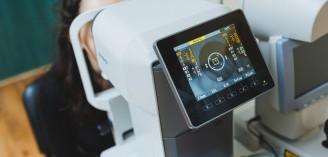Researchers from the Medical University of Silesia participated in an international team studying the application of artificial intelligence in ophthalmology. The results of their work were published in Nature Medicine.
The EyeFM multimodal AI model—designed to assist doctors in diagnosing and treating ophthalmic patients—was developed and validated using a dataset of 14.5 million ophthalmic images and 400,000 clinical texts from international and multi-ethnic databases.
The multi-stage validation included retrospective analysis, tests involving ophthalmologists from different continents, and a randomized, double-masked clinical trial involving 668 patients and 16 doctors. The results clearly demonstrated the advantage of working with EyeFM: diagnostic accuracy increased from 75.4% to 92.2%, and the rate of correct referrals for further treatment improved from 80.5% to 92.2%. Additionally, doctors using the model prepared more standardized reports, and patients showed higher adherence to therapy and self-monitoring recommendations.
One significant achievement of EyeFM is its enhanced ability to effectively utilize cheaper and more widely available imaging tests in situations where costly techniques such as optical coherence tomography (OCT) were previously necessary. This opens new possibilities for diagnostics in resource-limited countries.






